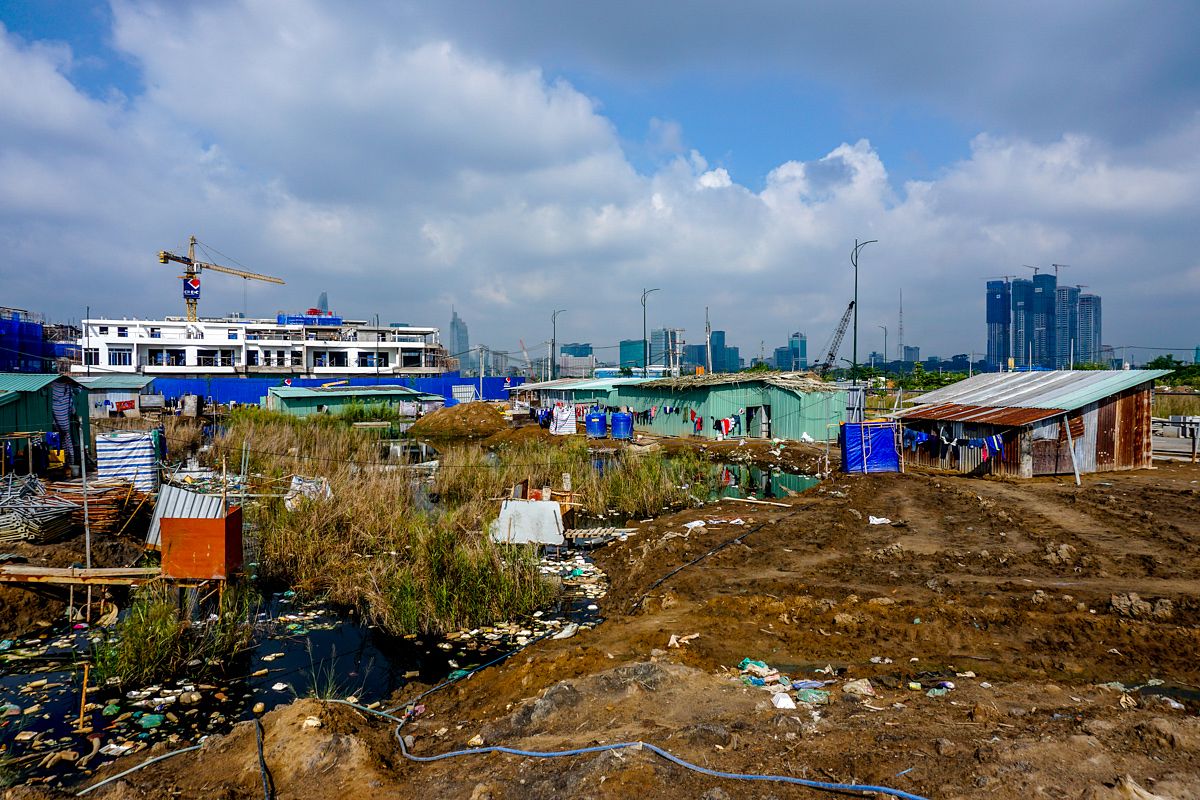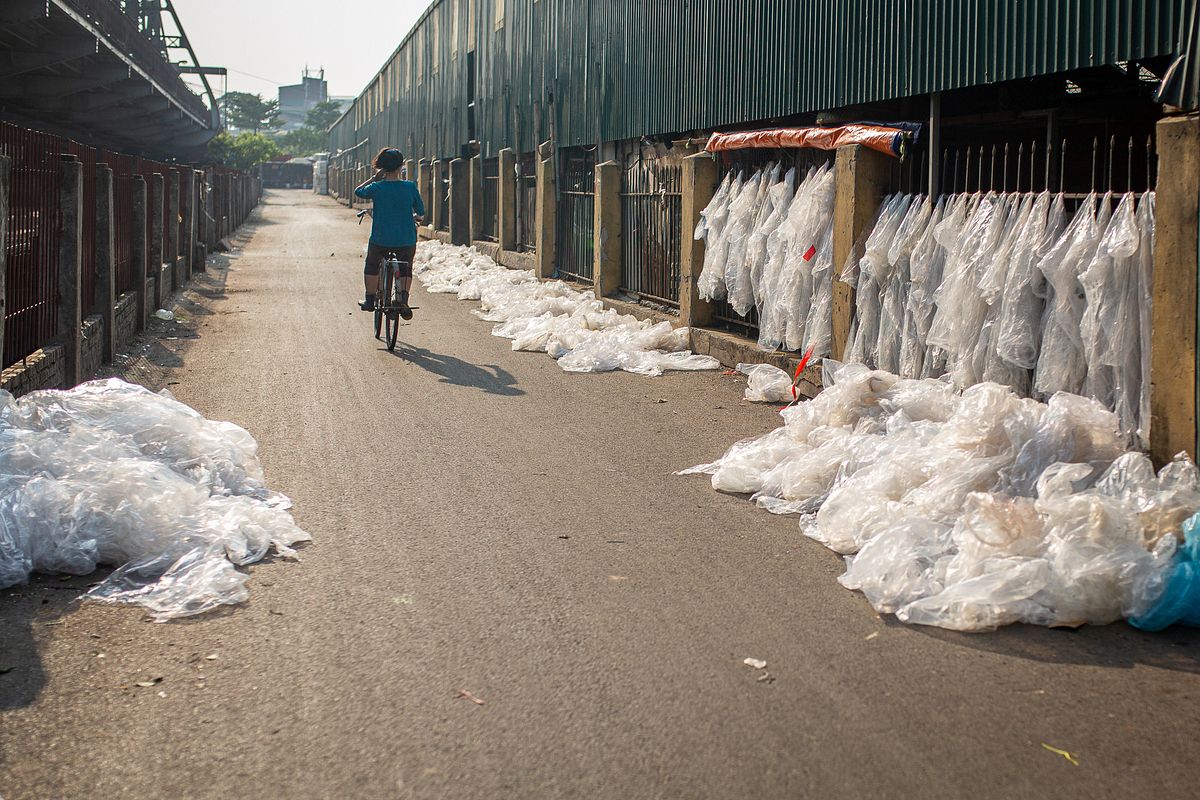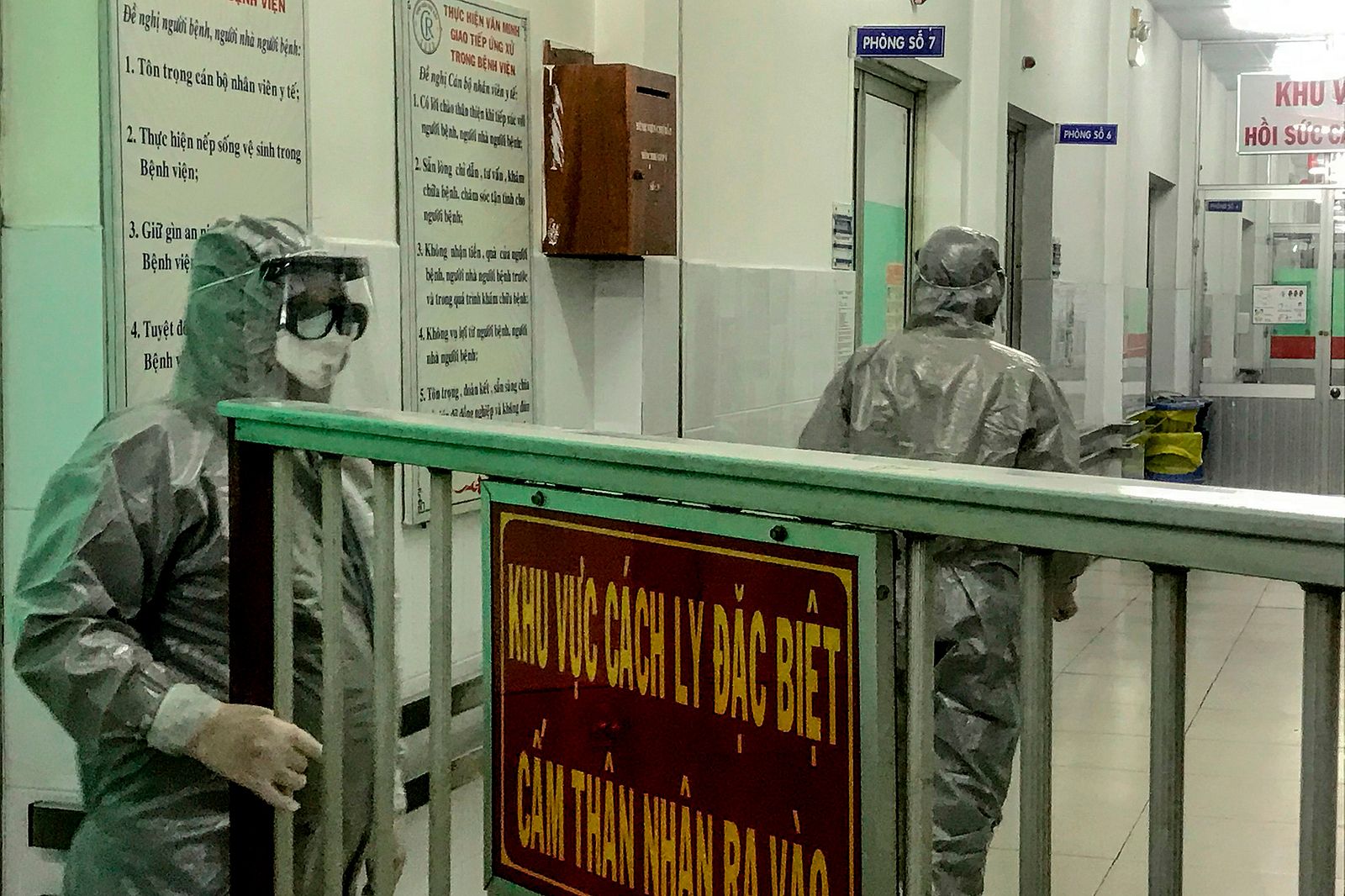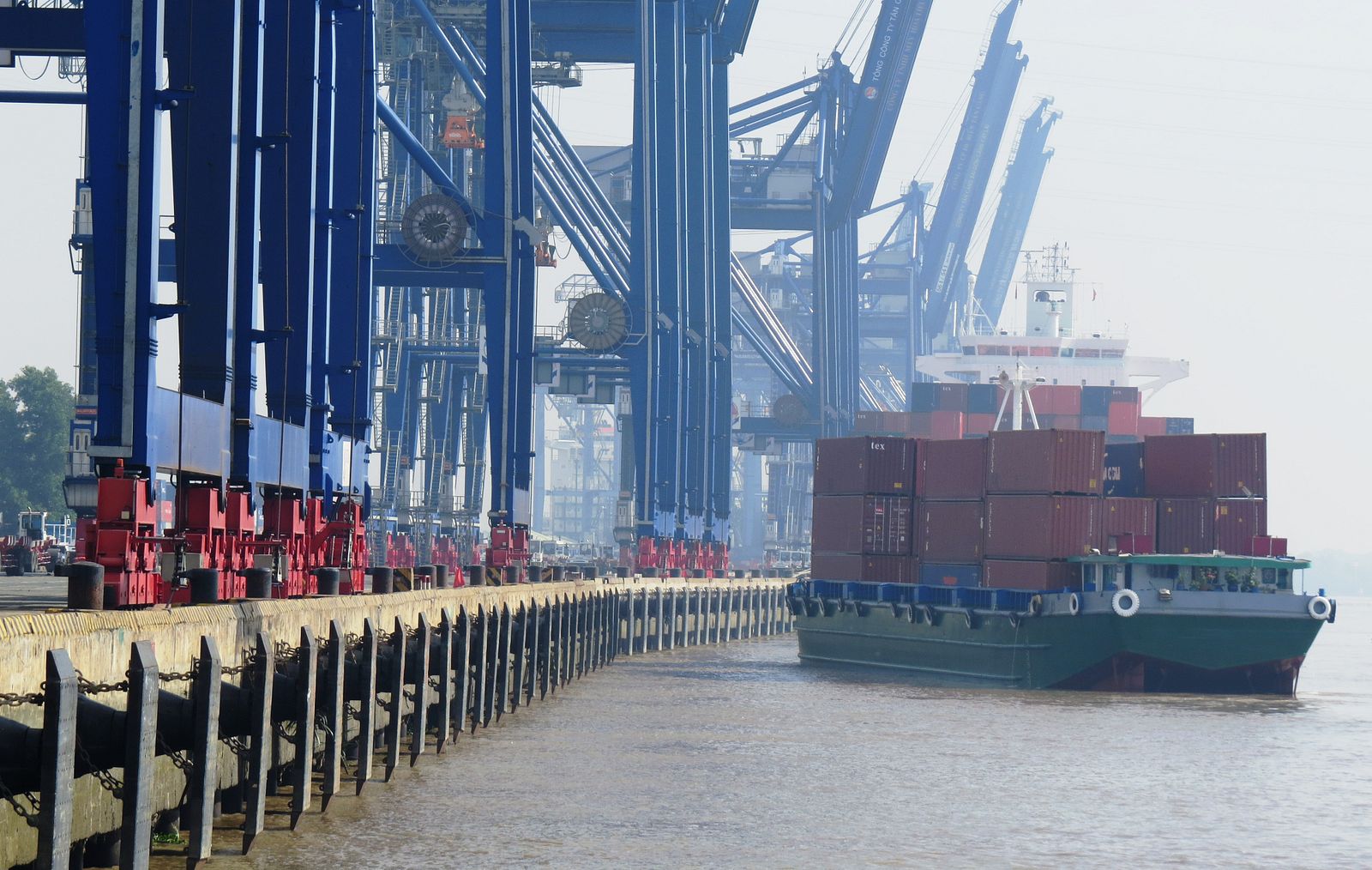The fetid vapors of a sewer canal may be unpleasant, but what lurks beneath the surface can be a killer.
The human body is a hospitable reservoir for hardy microorganisms that have grown immune to once-powerful medicines, and so too is the water that runs, pools and occasionally inundates the streets of Southeast Asia’s urban centers and megacities.
While public health officials are well aware of the toll of drug-resistant bacteria on land, the high and often inappropriate usage of antibiotics is now bleeding into the environment through untreated wastewater, promising effects as ominous as they are uncertain.
From the urban poor communities built along canals — where health complications already pile up when the rainy season swamps homes with foul water — to those in the exurbs of major cities who rely on river water for daily needs, the implications of this invisible contamination can be dire.
“The worst case scenario is that high level of antibiotics in the river causing resistance in the water, and then a population that lives near the river making contact with that through washing clothes, drinking, whatever,” said Alistair Boxall, a professor of environmental studies at the University of York. “We need to study whether these people are at higher risk because of that.”
Overuse and misuse of antibiotics has already bred bacteria increasingly immune to the drug treatments that once killed them. In 2016 alone, the World Health Organization estimates about 240,000 people worldwide died from multidrug-resistant tuberculosis, just one of many bacterial diseases becoming harder to treat thanks to drug resistance.

Temporary homes in Thu Thiem and a waterway invaded by litter. Photo by Michael Tatarski.
Last year, British scientists from York’s Environmental Sustainability Institute began an ongoing global research effort to study the reach of pharmaceutical contamination in natural bodies of water, including some of the world’s most iconic rivers, like the Mekong, Seine and Tigris. By the end of 2019, the team had drawn samples from about 210 rivers across more than 100 countries.
“The highlight message is that we detect pharmaceuticals in the vast majority of the samples,” explained Boxall, a project lead.
He said the York team has been looking for any of a total of 61 different pharmaceuticals, including 13 antibiotics. At some sites, they find evidence of a handful of the targeted drugs; from others, they detect traces of more than half.
Researchers from York have been studying the environmental effects of pharmaceuticals for about two decades. Boxall said it was in the late 1990s that scientists began to grasp the implications of humans and livestock excreting significant quantities of pharmaceuticals into wastewater systems – most of which are not designed to remove antibiotics and other drugs – feeding into natural bodies of water.
Since then, researchers have been tracking the presence of pharmaceuticals in rivers, soils and other environments around the world, including in Southeast Asia.
The ecological effects of pharmaceutical contamination show up in unexpected but usually harmful ways.
On the North Pacific coast of the US, researchers have found severe stunting in salmon exposed to human medications. Some of the fish were tainted with as many as 27 different detected drugs, including those for treating diabetes or depression. Scientists in Australia found almost 70 different pharmaceuticals in creatures living in Melbourne waterways, leading them to estimate that a platypus dwelling on one site could ingest about half a human dose of antidepressants daily.
While the macroscopic effects have been striking, public health officials have long been concerned about those on a smaller scale.
According to a study published earlier this year in the journal Nature, at the current rate, global deaths from drug-resistant bacterial infections are projected to increase from 700,000 in 2014 to 10 million by 2050.
About half of all antibiotics are used for livestock, wrote the authors of the Nature study, and while the drugs can affect the meat, it’s in the feces of farmed animals that they may be seen to the full extent.
The researchers note that past studies have found in animal waste slurries, as well as soils treated with manure, levels of antibiotic resistant genes as much as 28,000 times greater than those in untreated soils. Scientists believe those genes can be passed into microorganisms which may then come into contact with humans.

A maintenance worker picks up trash in a river in Hanoi. Photo by Chris Humphrey.
Even with the looming threat of a rocketing number of drug-resistant bacteria, the scope of the environmental problem is not yet clear. That’s just one question Boxall and the team from York are now trying to unravel.
According to Boxall, the team detected antibiotics in about 65% of the 710 sites they sampled from around the world. The researchers then compared the level of antibiotic contamination against standards published in 2019 by an alliance of pharmaceutical producers determining what those producers believe are safe levels of the drugs in the environment.
“What they’re saying is if the concentration of antibiotics is below safe level, then the potential for antibiotics to select for resistance in the environment is probably quite low,” he explained. Of the 710 site samples tested around the world, Boxall continued, about 111 were found to contain antibiotics in quantities exceeding the industry safety standard.
To reach that many sites around the world, the York team recruited the help of remote researchers who gathered local water samples, most of which were either upstream or downstream of urban centers, or sites Boxall described as “interesting” – such as those near hospitals, garbage dumps or wastewater treatment plants.
The field researchers then froze the water samples and shipped them to the UK for analysis. With that methodology, the team found some of the highest levels of contamination in localized areas of Bangladesh, Pakistan, Ghana and Nigeria.
The worst-hit site was an area on the Kirtankhola River outside the city of Barisal in Bangladesh — right near a pharmaceutical production center. The York researchers found levels of antibiotic contamination about 300 times higher than the industry-deemed safe quantity. At another highly pharma-polluted site in West Africa, researchers were able to readily point to the nearby dumping grounds of sewage exhauster pump trucks, which emptied their load of human waste into the water.
Though the Southeast Asian testing sites recorded by the York team haven’t come close to those results, part of that may just be due to a lack of sampling in the right places. Boxall acknowledged that his team’s testing on the Mekong River, Southeast Asia’s longest, which runs through the national capitals of Laos and Cambodia, came from areas of rural Laos removed from the kind of urban centers that yielded high readings elsewhere.
As such, he said it’s “not giving us the full picture” of pharmaceutical contamination.
“Lots of big rivers have a lot of dilution, which brings the samples down,” Boxall said. “I’m sure if we went to places in Laos, places where populations live along tributaries that flow into the Mekong, we’d maybe see levels similar to the sites in Kenya and Nigeria.”
The highly localized implications of the York study help to confirm some of what Southeast Asian research efforts have already found on the enviro-pharmaceutical impacts of untreated human waste in waterways.
A 2016 study of Bangkok’s Chao Phraya river found E. coli bacteria resistant to a range of some common antibiotics. Though the river researchers wrote that fecal wastewater is “definitely” the source of antibiotic-resistant bacteria in the Chao Phraya, they believed these hardier bacteria were entering the water from points in the city itself, suggesting hospital discharge as one possible source.
Medical facilities are far from the only contributors of contamination though. Runoff from single-stream sewer systems is common in tropical climate regions, the report authors noted, where drains can be inundated by rainwater and flush human excrement into rivers and canals.

Single-use plastic items and styrofoam boxes cover the surface of a Saigon canal. Photo by Lilly Pugh.
The issue in the water might just reflect the worsening situation surrounding drug resistance on land. In the Thai study, the authors noted that earlier clinical studies from the National Antimicrobial Resistance Surveillance Center had found a relatively high ratio of drug-resistant bacteria in the urine samples of patients tested there. According to the Centers for Disease Control, in Thailand more than 38,000 people die each year from the effects of antibiotic resistance.
Though the York team was still analyzing its environmental data against that gathered in clinics by public health services, Boxall said there was already evidence of “quite a good relationship” in terms of river contamination and the levels of resistance found among patients going into hospitals.
“That’s just an association though, and one of the reasons we detect high levels [of antibiotics] in the river is because we see high levels in the population,” he noted.
The habitual overuse of antibiotics is a problem of global significance and, while less-developed nations typically lean harder on this class of drug, even doctors in mature health systems may prescribe antibiotics at the wrong time. In many developing countries, including those in Southeast Asia, patients can easily purchase these drugs over the counter – even where official regulations forbid such lenient supply.
A 2017 study in Cambodia found “habitual supplier-seeking behaviur that was enabled by unrestricted access and misconceptions” about the use of antibiotics as a cure-all.
“The main driver of the community’s demand for antibiotics was a mistaken belief in the benefits of antibiotics for a common cold, high temperature, pain, malaria and ‘Roleak’ which includes a broad catch-all for perceived inflammatory conditions,” the study authors wrote.
The patient-doctor relationship is a pillar of the fight against drug-resistant bacteria and, while better sewers and wastewater treatment won’t completely fix the problem of environmental contamination, they could address some of the risk while preventing other health problems related to poor sanitation.
For researchers like Boxall, any long-term fix has to address both the supply and disposal sides of antibiotics. Otherwise, the unintended consequences of their environmental contamination could add to an already mounting public health crisis.
This article was originally published by Southeast Asia Globe.














